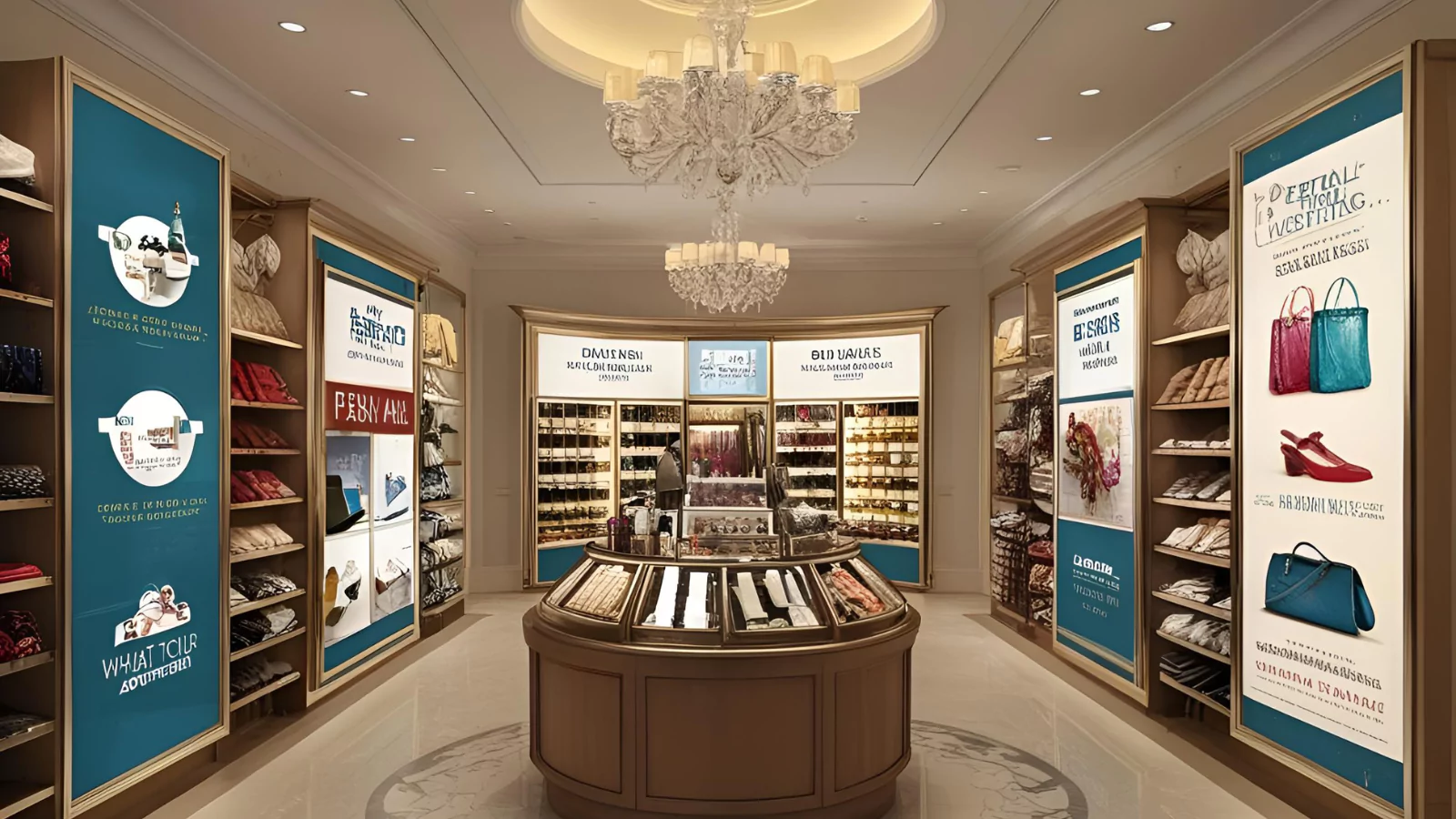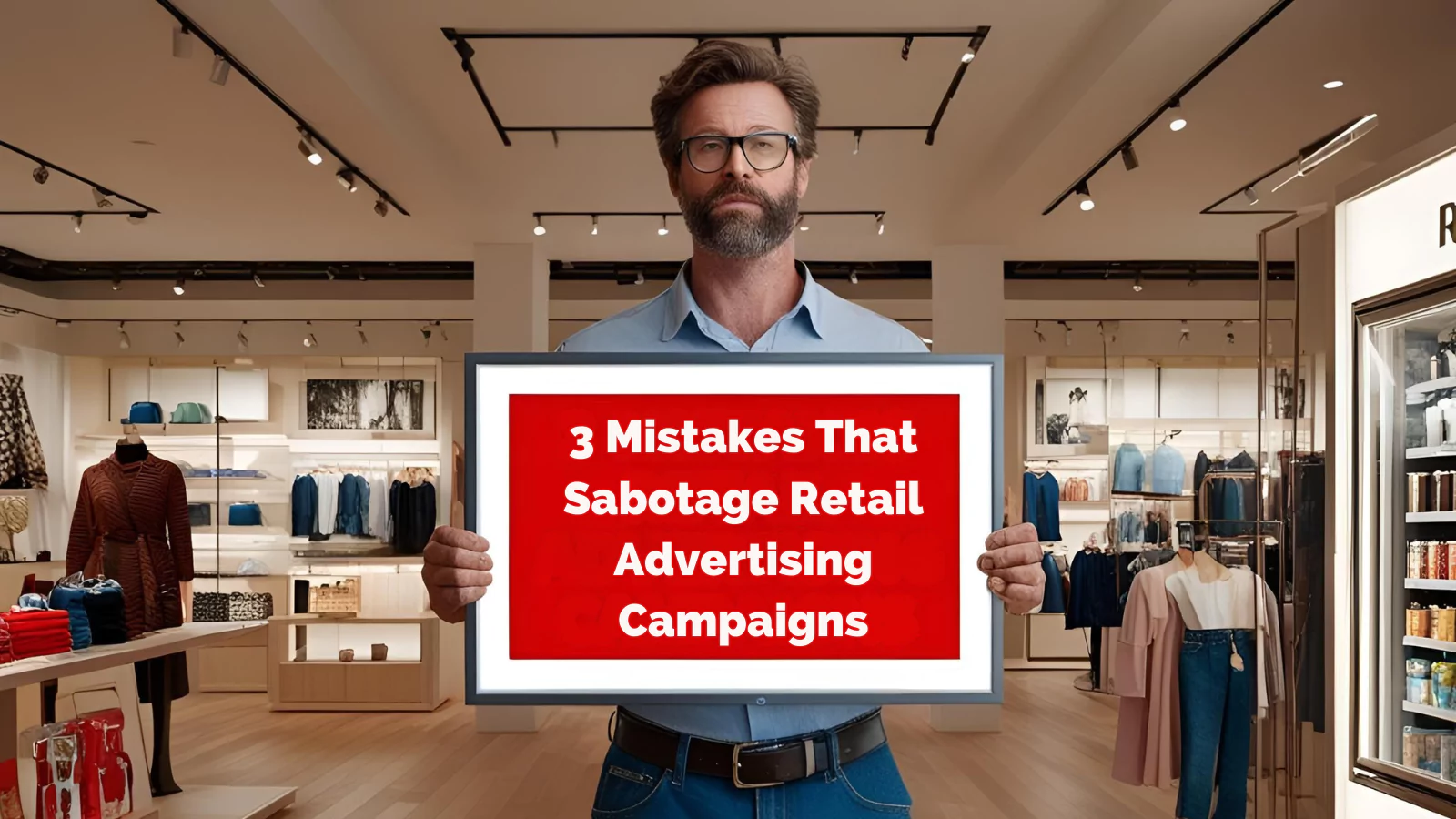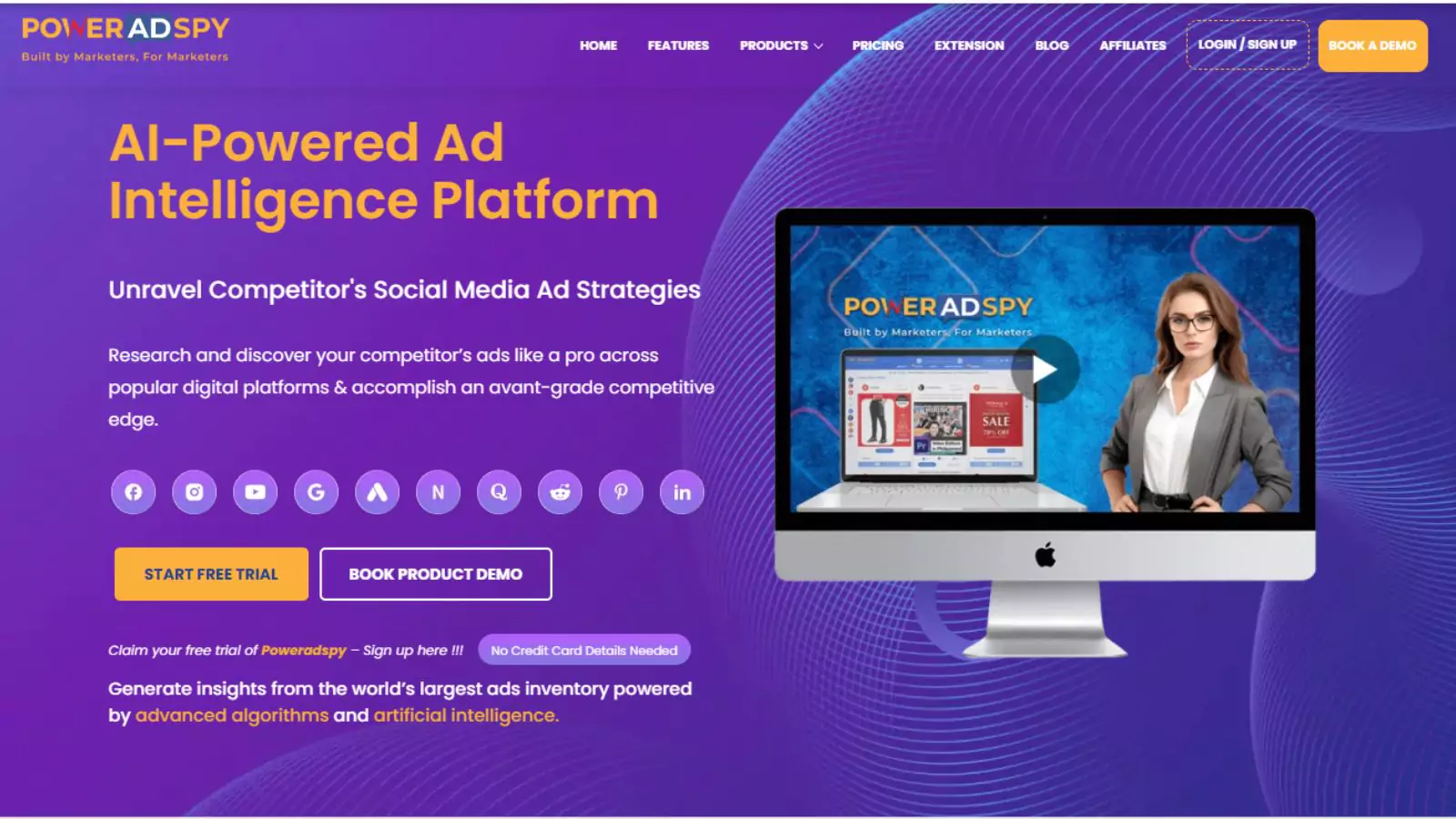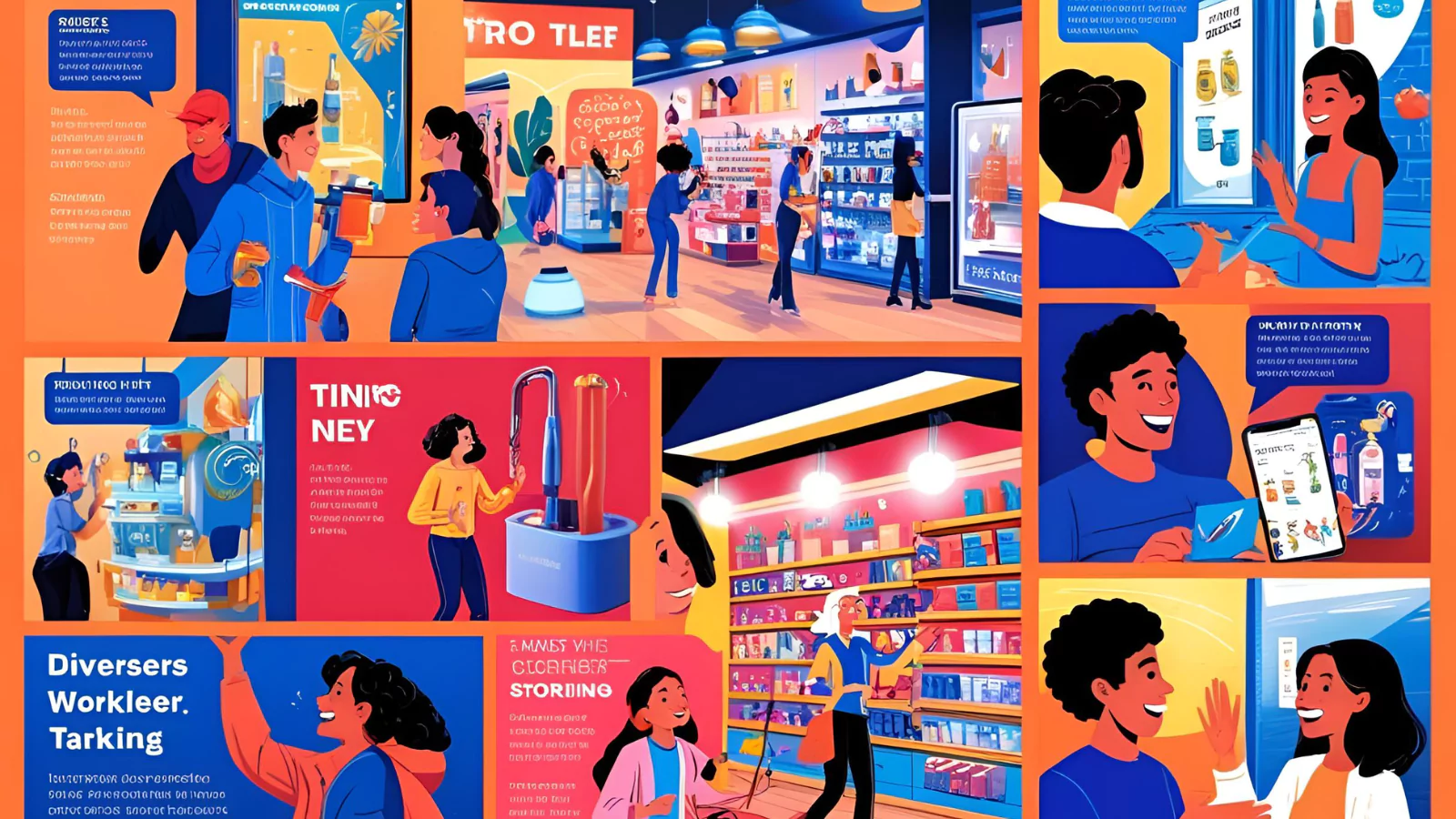How To Master Retail Advertising For Better Results?
This post explores the art and science of retail advertising through carefully planned campaigns. A well-crafted message can transform curiosity into purchase decisions, and this guide shows you how. Using practical strategies and innovative tools,
You will discover clear steps to improve campaigns and build genuine customer connections.
Each section builds on the last, offering actionable insights and fresh ideas to keep your campaigns effective and engaging.
Along the way, we share practical tips, proven strategies, and real-world case studies that highlight the power of precision in retail advertising. Even small, thoughtful adjustments in your campaign management can drive meaningful results, ensuring your efforts translate into success.
In a hurry? Listen to the blog instead!
What Is Retail Advertising? (And Why It’s More Than Just “Sales”)
Retail marketing is not just about selling products; it is about creating experiences that resonate with your audience. Good advertising shows the value of a product or service, appealing to both emotion and logic. Clear messages help customers make informed decisions and build loyalty while telling your brand’s story.
Retail marketing also uses visuals, persuasive copy, and timely offers to create experiences that drive action. The key is combining creativity with marketing strategy, making sure every detail, from colors to timing, supports your goal of conversion.
Next, we will explore how advertising acts as both a promotional tool and a constant ambassador for your brand, showing how messages can quietly but effectively drive sales.
Why Retail Advertising Is Your Brand’s Silent Salesperson?
A well-crafted campaign can serve as a constant advocate for your business. Many customers are influenced by subtle yet persuasive cues that prompt action without overtly selling the product. In this environment, retail advertising acts as your brand’s silent salesperson, always at work behind the scenes. A tailored message conveyed with clarity and purpose can stand in place of a direct sales pitch, gradually building trust and prompting engagement.
An effective campaign often taps into customer habits and preferences through personalization and consistency. Whether it is through well-timed emails, refined social media placements, or artfully arranged in-store visuals, the impact of a thoughtfully delivered message speaks volumes. Businesses are increasingly turning to customer insights and data-driven techniques to perfect this approach, ensuring that each touchpoint is relevant and timely.
As we proceed, you will see how a continuous chain of customer interactions, facilitated by retail marketing, creates opportunities to reinforce your brand message and invite further inquiry. It leads naturally into our next discussion regarding diverse strategies that can make your campaigns particularly compelling.
Retail Advertising Strategies
Crafting campaigns that truly resonate requires more than a single promotional tactic. Here, we delve into multiple strategies that work together to produce powerful results. Start by reconsidering your in-store approaches: Techniques such as interactive displays and clear product placements connect the physical experience with digital engagement. Incorporating QR codes or interactive kiosks makes the shopping experience smoother & adds a layer of tracking that can reveal valuable insights. In this way, retail marketing becomes a bridge between physical engagement and digital analytics.
Another key component lies in the realm of social media. Instead of relying solely on static posts, incorporating interactive and multi-format content can help drive engagement with a wider audience. Carousel ads, short video clips, and creative influencer partnerships are examples of how brands can maintain relevance across various platforms. With every post and placement, the underlying aim remains to guide the customer journey from interest to commitment.
Further, email marketing continues to be a dependable avenue for direct communication. Personalized messages and timely follow-ups, such as reminders about abandoned carts or exclusive offers, create a sense of urgency without feeling aggressive. Each approach in retail marketing, when executed with finesse, contributes to the goal of establishing a seamless customer experience.
The next section builds on these strategies by examining common pitfalls. Learning from mistakes is essential to refining your approach, so we now explore how to sidestep errors that undermine your efforts.
3 Mistakes That Sabotage Retail Advertising Campaigns
Despite robust planning, even the most thoughtfully designed campaigns can be derailed by simple missteps. These common errors can quietly undercut your retail marketing performance and lead to wasted resources if not addressed early.
Mistake 1: Ignoring the Competition
One of the most overlooked but critical errors is failing to monitor competitor activity. Retailers who neglect to track what others in their industry are doing risk falling behind. Competitor trends often reveal shifts in consumer behavior, new formats gaining traction, and emerging platforms worth exploring. Without this context, your campaigns might miss the mark or appear outdated. Staying current with industry movement is essential for relevance and performance in any retail marketing strategy.
Mistake 2: Overloading Ads with Clutter
While it’s tempting to showcase everything in a single creative, too much information can overwhelm your audience. Busy visuals, lengthy copy, and multiple CTAs often lead to confusion rather than conversion. Great retail advertising respects simplicity. Clean layouts, sharp imagery, and focused messages attract attention & help shoppers make decisions faster. Brands like Apple have built empires on minimalism—proof that clarity beats complexity every time.
Mistake 3: Ignoring Data-Driven Adjustments
Campaigns that rely only on intuition or outdated insights are often outperformed by those grounded in real-time analytics. Retail marketing thrives when it adapts to customer behavior. Skipping this step means missing out on valuable optimization opportunities. Whether it’s adjusting ad copy, audience segments, or timing, every decision backed by data adds momentum to your campaign. Marketers who continually test, refine, and optimize often see higher ROI and deeper engagement over time.
In this context, retail marketing reveals its true strength—not just in reaching audiences but in evolving alongside them. Avoiding these three mistakes sets the foundation, but to truly sharpen your strategy, you’ll need the right tools.
That’s where PowerAdSpy comes into play. Next, we’ll explore how this advanced platform helps marketers not only avoid these pitfalls but also gain an edge in building smarter, data-backed campaigns that consistently convert.
PowerAdSpy: The Smartest Companion For Retail Advertising Campaigns
After identifying the common missteps brands often make, the next logical step is to integrate tools that prevent those pitfalls and drive measurable results. One such essential resource for marketers is PowerAdSpy—a trusted ad spy tool tailored to refine and scale modern retail advertising efforts.
Unlike traditional approaches that rely on assumptions or gut instinct, PowerAdSpy provides hard data and strategic clarity. Whether you’re refining a campaign for seasonal promotions or testing creatives for a product launch, this platform offers a competitive advantage in navigating today’s advertising landscape.
Here’s how PowerAdSpy transforms your approach to retail store advertising:
Real-Time Competitor Tracking
Gain an inside look into your competitors’ top-performing ads across Facebook, Instagram, Google, YouTube, and TikTok. This type of deep visibility ensures you’re not just aware of trends but also positioned to act on them first.
Massive Creative Library
With access to over 100 million ad creatives across industries, PowerAdSpy makes it easy to analyze what works. You can filter content by platform, format, or objective, allowing you to draw inspiration while staying aligned with your brand goals. It also reinforces your understanding of retail advertising definition through live, proven retail advertising examples.
Audience & Performance Insights
Beyond just viewing ads, the platform offers robust analytics that uncover which audiences are engaging and how specific ads perform. These insights are crucial for marketers looking to personalize outreach or reallocate budgets for maximum ROI.
Data-Backed Testing & Optimization
From headlines to visuals, PowerAdSpy helps you test and iterate with precision. These capabilities are especially helpful when trying to refine messaging or design elements based on proven patterns identified through the ad intelligence software built into the tool.
By equipping your campaigns with PowerAdSpy, retail advertising becomes more focused, data-driven, and aligned with what customers truly respond to. No more guesswork—just strategic clarity and creative confidence.
As we move forward, let’s explore how real brands have applied similar strategies and tools to achieve measurable success. These stories prove that with the right approach and resources, even small retailers can create campaigns that resonate, convert, and build long-term loyalty.
Retail Advertising In Action: Stories That Inspire
Local Bookstore Turns Browsers Into Buyers
Success stories often begin with a challenge. A small independent bookstore in a moderately populated city had been experiencing a steady decline in foot traffic. Rather than relying on traditional methods alone, the store adopted a fresh strategy by combining creative window displays with localized Facebook ad campaigns. These campaigns were carefully timed and crafted with compelling messages that connected with the local community.
As a result, the store saw a 40 percent increase in customer visits. This success was not accidental. It was the outcome of deliberate retail advertising efforts that blended physical and digital touchpoints effectively. The campaign maintained the store’s identity while addressing consumer behavior, showing that retail advertising can succeed with intention and precision.
Fashion Brand Doubles Conversions With Smarter Targeting
Another powerful retail advertising example comes from a rising online fashion brand. Faced with high bounce rates and inconsistent sales, the brand chose to pivot from intuition-driven strategies to a more analytical approach. They used an ad spy tool to explore what worked for their competitors and implemented insights from ad intelligence software to tailor their creatives.
Rather than overcrowding their ads with excessive visuals or text, they simplified their message, used customer-centric visuals, and delivered clear calls to action. Within two quarters, their conversion rates doubled. It wasn’t the result of extravagant spending but strategic refinement based on data and competitor awareness. It’s a clear reflection of how thoughtful retail advertising can convert interest into measurable results.
Lessons From Real-world Success
These examples highlight a consistent theme: the importance of aligning creativity with consumer data and execution with audience intent. Whether it’s a physical storefront or a purely digital presence, the foundation of successful campaigns lies in clarity, simplicity, and the smart use of tools.
From visual storytelling in-store to algorithm-informed ad placements online, these success stories are proof that retail campaigns don’t have to be complex to be effective. What they do require is a clear objective, a flexible mindset, and a willingness to adapt.
Understanding these real-world scenarios offers a valuable perspective for any brand looking to elevate its approach. The key takeaway here is that retail advertising, when approached as both an art and a science, delivers sustainable value.
Read More:
5 Best eCommerce Advertising Examples To Follow
YouTube Marketing For Retail: Use YouTube To Grow Your Business
Conclusion
Advertising in retail is more than just showcasing products it’s about creating meaningful connections with your audience. Whether through digital campaigns or in-store experiences, ads in retail play a crucial role in guiding customers toward decisions that benefit both them and the brand. Understanding the true ads retail meaning allows businesses to craft messages that resonate and drive action. Advertising in retailing thrives when it blends creativity with data, ensuring campaigns capture attention & convert it into lasting customer loyalty. By focusing on the right strategies and tools, retail advertising can turn a simple interaction into a powerful brand experience.
To take your retail advertising efforts to the next level, tools like PowerAdSpy offer invaluable insights and data-driven strategies. With its advanced ad intelligence capabilities, PowerAdSpy empowers marketers to refine their campaigns, avoid common pitfalls, and stay ahead of the competition.
FAQ
- How can small businesses benefit from advertising retail campaigns?
Small businesses can leverage advertising retail campaigns by using targeted, cost-effective strategies to reach their local audience. With creative approaches like personalized messaging and localized ads, small businesses can create strong connections without the need for large budgets.
- What are some cost-effective methods for advertising in retail?
Cost-effective methods for advertising in retail include social media promotions, email marketing, and in-store signage. By combining digital and physical strategies, retailers can maximize their budget while driving consumer engagement.
- How do online retail ads differ from traditional retail advertising?
Online retail ads are often more targeted, using data to deliver personalized messages to specific audiences. In contrast, traditional retail advertising like TV or print ads tends to reach broader audiences without the same level of targeting, making online ads more efficient for measuring return on investment.
- What are the latest trends in advertising retail?
The latest trends in advertising retail include interactive ads, influencer partnerships, and augmented reality (AR) experiences. These innovative strategies engage consumers in new ways, creating immersive experiences that drive sales and brand loyalty.
- How important is data in shaping advertising retail strategies?
Data plays a crucial role in shaping advertising retail strategies. By analyzing customer behavior, preferences, and interactions, retailers can fine-tune their campaigns to be more effective, ensuring they target the right audience with the right message at the right time.











